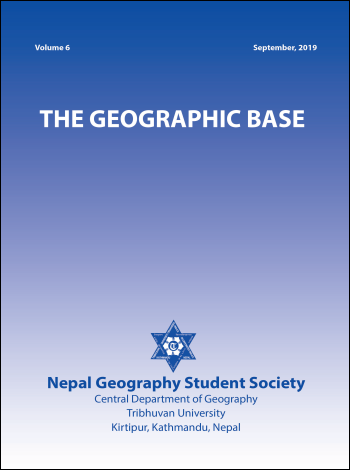Soil Fertility Management Practice in Sainamaina Municipality, Rupandehi Nepal
DOI:
https://doi.org/10.3126/tgb.v8i01.43475Keywords:
Soil fertility, Organic, Manure, Soil productivity, Local seedAbstract
This paper aims to show the soil fertility management practice in Sainamaina Municipality, Rupandehi Nepal. Soil fertility management is human practice to increase crop productivity while maintaining or improving soil's physical chemical and biological properties. For research work, ward 5,6,7,8 and 9 of Sainamaina municipality Rupandehi district of Nepal was selected as the study area. This study was conducted based on both primary and secondary data. To make soil more fertile, urea, diammonium phosphate (DAP) and potas are applied as chemical fertilizer and animal dung and green manure (Sesbana bispinosa and vigna radiata) are used as organic fertilizer in the study area. To save potato from blight, farmers use to apply pesticides getting from local aggravates and pesticides are used to control Gabaro Stem Borer) in paddy and maize in spring and autumn. To remove weeds by human resource the Parimo System (equal labor sharing by farmers to each other) was rooted in past but through time Parimo System is decreasing because of peoples of study area are engaged to other occupation as well. Out of the 74 total agriculture area (2361.7ha) only 9% were irrigated. Around 80% area of the total irrigated land irrigated by public tub well. There are six tube wells situated in study area. Farmers of the study area used both domestic and improved seeds and they often practiced bartering system for local domestic seeds for their cultivation. Local domestic seed is gradually going to be replaced by hybrid seeds. The different productivity of different crops was detected from the farmer as an indicator of soil fertility management practice.
Downloads
Downloads
Published
How to Cite
Issue
Section
License
© Nepal Geography Student Society




